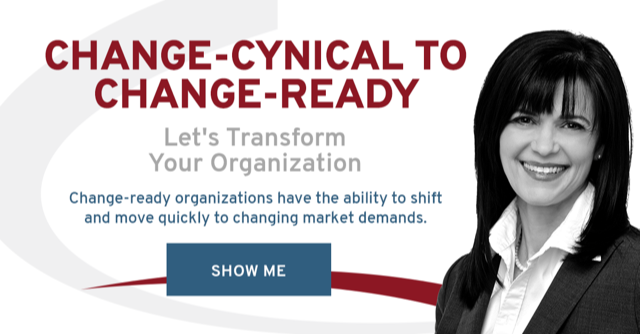18 months ago, many of you sent your employees home and set them up to work remotely. You did it quickly, without much time to prepare. One leader shared with me how her organization’s IT department set up over 5000 people across Canada to work remotely in just three days. Employees, despite their fear and frustration, rose to the occasion. It wasn’t easy, but it was only going to be short-term — a few weeks, maybe a couple of months. We all know that didn’t happen.
The goal in those early days was to keep our employees safe and working and continue operations.
 Over the past 18 months, I have seen many organizations and people begin to thrive. We have developed new routines. Some people have grown to enjoy remote work. At the same time, many employees feel on edge. They are concerned about going back to the office and what it means for them. For others, remote work hasn’t been an enjoyable experience. I recall more than one person pining for her daily commute. She missed the office and wanted to go back.
Over the past 18 months, I have seen many organizations and people begin to thrive. We have developed new routines. Some people have grown to enjoy remote work. At the same time, many employees feel on edge. They are concerned about going back to the office and what it means for them. For others, remote work hasn’t been an enjoyable experience. I recall more than one person pining for her daily commute. She missed the office and wanted to go back.
But there is no going back. Remote work is here to stay. As you look to the future, to what comes next, it’s not about going back. It’s about creating a new steady state. If you want your organization to thrive, defining your new state needs to be done consciously, not as a default.
Beliefs have Shifted
The past year and a half has upended many of our beliefs about the way organizations can operate. Organizations with strict no remote or work from home policies have demonstrated that they can work more productively with higher employee engagement.
I recall a conversation (complaining) with a physician a few years ago about needing to go into the office to get a prescription refilled. She gave several valid reasons why telephone consultations wouldn’t work and were potentially dangerous. Today, telephone consultations and video consultations have become routine. I don’t want to go back and take hours out of my day to renew a prescription, get a negative test result or do other similar activities.
And to be clear, I do believe in-person consultations, meetings and other activities are essential. There are some things you can’t do remotely. However, our view of what is possible has shifted in our personal, professional, and organizational landscape.
That’s why instead of trying to go back, you need to focus on moving forward. You need to consciously and deliberately design and actively involve your employees to create a new steady state.
A new steady state isn’t without change. Change will always be the one constant in our lives. A new steady state is when the new becomes normal. Language plays a crucial role in our transition to a new steady state. Instead of asking, how do we get back to normal? Ask what’s needed to transition to a new normal?
We have a unique opportunity to redesign the way we work and live consciously.
Transitioning to the New Steady-State Requires More Change
The transformation to a new steady-state will require more change and not less. In some ways, the changes required will be more complex because many people are tired, grieving the loss of what was, and fearful of what’s to come. Everyone has their own beliefs about what the new steady-state should look like and feel like.
When forming your new steady-state, it’s vital that you actively involve the people who will work in the new environment.
Your team and employees have demonstrated their capacity for change when they believe it’s needed, feel supported, and are focused on a common goal. It is disrespectful to bring people back and expect they will transition to a new steady-state the way they had to adapt to remote work. It also creates an organization by default instead of by design.
Change management is not just for projects. When you integrate the essential elements of change management into all your communication and planning, you can transform your business. The first step you take is to create your intended outcome story.
A quick side note– in this blog, I’m using the term change management as the umbrella term. It includes both leadership and organizational change.
Creating your Outcome Story
One essential element needed to enable any change is an intended outcome story. You need a clear, concise, and concrete intended outcome story.
You may have a vision for your organization, even developed a new strategic plan during the pandemic. But those are not the same as the intended outcome story.
Your intended outcome story is different. Your outcome story describes what the people in your organization will experience when they have re-stabilized to a new steady state.
You cannot simply retrace the steps and arrive back at the same place you were before the pandemic. Too much time and adaption have occurred.
If you don’t consciously, with a clear focus, create an intended outcome story for your new working environment, you will create more uncertainty, stress, and lost productivity. McKinsey’s study found that 68% of companies didn’t have a detailed vision for hybrid work.
I’ve been focusing on the return to the office because most organizations are working on it. Unfortunately, many organizations do it with mandates, with no clear plan and consideration of how people’s lives have changed. I keep seeing a lot of talk about the Hybrid model. On the surface, this looks like the ideal solution. It appears to balance the desire to have some work done in-office while also accommodating those employees who want to continue to work remotely.
But take a closer look, and many questions arise. For example, does a hybrid organization mean the workforce is hybrid or is the workweek hybrid? What about the employees?
The hybrid environment poses additional challenges related to exclusion and a sense of belonging. Managers and employees will need different skills and new processes to avoid other risks like distance bias and ensure the success of the hybrid environment. Yahoo cancelled their remote-working experiment in 2013 when the CEO stated they needed to become one company again.
Where to go from here
Regardless of the model that’s right for your organization, fully remote, in-office, or hybrid, it needs to be actively and consciously designed and planned. Creating a new steady state and transforming your organization takes time. It’s also easy to do on paper but harder to execute. To discover how we can help you successfully make the transition and create a healthier and stronger organization through it, contact us. We’d be happy to work with you to design and transition to a new steady state.



